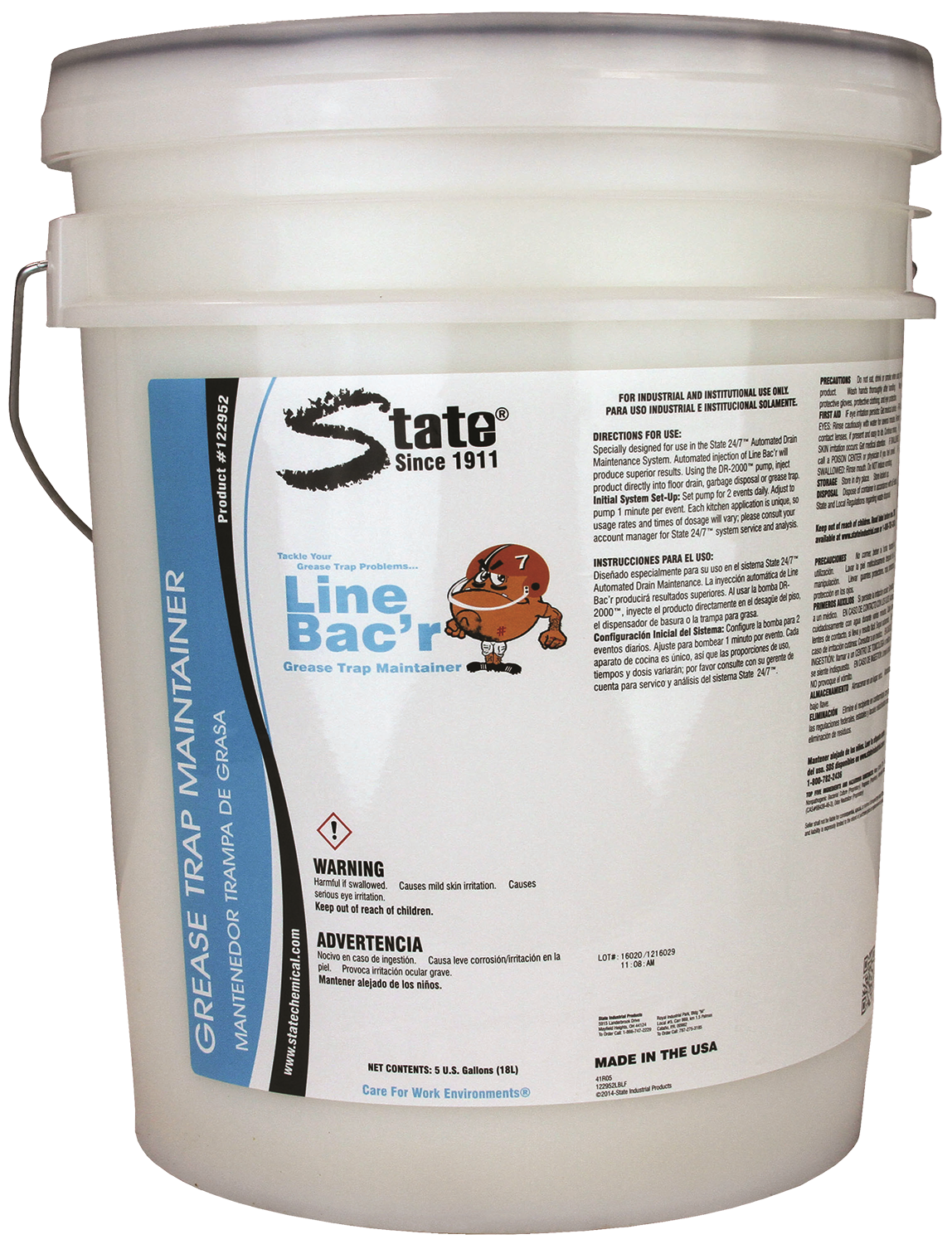
How to Reduce Lift Station Grease Buildup
Picture this: your lift station is caked with solids. Every time you check on it, there’s a grease cap floating on top—to the point that it doesn’t even look like there’s water in the wet well. You know this is a problem, especially when it smells putrid just to walk past it, but it’s easy to decide to worry about it later.
That is until the grease buildup gets so bad that the floats (sensors that activate the pumps when the water level gets too high) stop functioning properly without your knowledge. Then, your lift station overflows, causing severe damage to the entire floor and costing you thousands of dollars.
At State Chemical, we manufacture and distribute chemical and biological solutions to a variety of problems, including lift station sludge. When you have so many responsibilities to juggle as it is, it can be hard to also solve lift station problems, and unfortunately, the consequences of inaction can be costly.
To help you take care of your lift station, we will explain what causes grease buildup in lift stations, how degreasers can treat lift station FOG accumulation, how biologicals can treat lift station buildup, and what the best option for your facility is. After reading, you’ll know how to reduce your lift station sludge and have a cleaner, safer facility as a result.
What Causes Grease Buildup in a Lift Station?
The entire purpose of a lift station is to collect wastewater and move it into the sewer system. There’s a reason why it smells bad—it’s full of organic waste. And as long as it continues functioning as intended, it will always be full of foul-smelling organic waste.
Because of the presence of waste, lift stations also tend to collect fats, oils, and greases (FOGs). Think about everything that goes down your drains from soap scum and hair to fryer oil, food scraps, fecal matter, and more. All these items have to go somewhere, and when they’re sitting in a lift station, their solids float to the top or sinks to the bottom depending on density—and then it hardens.
This can cause a number of different problems for your lift station.
Odors
The most noticeable of these problems will be odors. When there is a collection of solids in your lift station, it’s just not going to smell good. Sometimes, this smell can get so bad that it can seep into other areas of your facility, causing staff and visitors discomfort.
Improperly Functioning Floats
Additionally, grease buildup can lead to improperly functioning floats, as described at the beginning. When grease hardens onto floats, they may inaccurately sound the alarm, warning of an overflow that isn’t going to happen, or they could miss an actual problem, failing to give necessary warning to prevent an overflow.
More Frequent Pump-Outs
FOG buildup in lift stations can also require more frequent pump-outs to avoid overflows and releasing FOGs into the sewer system, which can lead to clogs and fines. Overall, FOG buildup in lift stations can cause an array of different issues, none of which is particularly desirable for your facility.
Luckily, there are two primary ways to treat FOG buildup in lift stations: degreasers and biologicals.
What is a Lift Station Degreaser?
A degreaser is a type of lift station treatment that floats on top of the wet well to break up FOGs. And as the wastewater level rises and falls, it cleans the walls of the wet well. Additionally, by sealing off the top, degreasers trap odors inside the lift station and emit a pleasant scent instead.
Degreasers are considered to be preventative or reactive treatment. This means that if your lift station is already experiencing severe FOG problems, degreasers can help emulsify these immediately. They can also stop buildup from forming in the future, making them an ideal long-term solution. Plus, with their odor-capping capabilities, they’re a useful fix to bad odor problems.
What is Biological Lift Station Treatment?
Biological products are solutions to treat FOG buildup in lift stations using “good” bacteria instead of chemicals. Once released into the wet well, the bacteria digest FOG buildup into water (H2O) and air (CO2).
Biologicals prevent and slow the buildup of FOGs—although, it’s important to note that biologicals work slowly with pre-existing buildup, so it’s usually best to start treatment after first pumping out your lift station. Once added to your lift station, the bacteria build a colony and get to work breaking down FOGs.
Additionally, the bacteria in biologicals multiply quickly in your lift station, and they will continue to form their colony (even if you stop using the product) as long as conditions remain livable (meaning that there must be a food source, temperatures of at least 40° F and no more than 120° F, and a pH of 6–9).
Overall, biological products are equipped for slowing grease accumulation, making them a strong fit for recurring FOG buildup.
How Should I Treat My Lift Station Grease Buildup?
All this said, how do you know which option is right for treating your lift station? Consider the following:
Do you want an immediate or long-term solution? If you’re looking for immediate results, go with a degreaser. If you want a long-term solution, biologicals or degreasers will each work.
How bad is your FOG buildup? If you have persistent, hard-to-manage issues, a biological may better treat the root of the problem. Meanwhile, if your problems are less severe, a degreaser will be effective.
Are odors a concern? If so, a degreaser may be the right course of action rather than a biological. Biologicals still remove odors by breaking down their source, but degreasers are more targeted toward odors by creating a cap and emitting a pleasant fragrance.
Think about your goals for your lift station, and you’ll be able to find the right product for your needs.
Learn How State Chemical Can Treat Your Lift Station Buildup
Lift station buildup can have consequences that are both destructive and downright icky. Now that you know methods for reducing sludge in your lift station, click here to learn how State Chemical can help you treat your lift station buildup.






















































